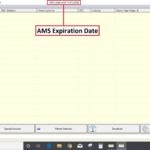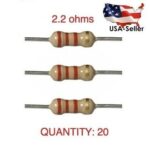The E40 Ecu, a Gen 3 engine control module, stands out for its unique characteristics and application in specific GM vehicles like the 2005-2006 Grand Prix, Impala, and Corvette. This guide delves into the intricacies of the E40, comparing it with alternative ECMs like the P59 and P01 to help you make an informed decision for your LS swap project.
Understanding the E40 ECU: Quirks and Capabilities
The E40, while airflow/VE based and categorized as a Gen 3 ECM, often gets described as peculiar and less intuitive than its counterparts. It served as a transitional ECM, bridging the gap between Gen 3 and the subsequent Gen 4 ECUs. Some even liken its characteristics to OBD1.5, reflecting the evolutionary step from OBD1 to OBD2.
One notable aspect of the E40 is its limited pinout information availability. Unlike the P59 and P01, detailed wiring diagrams and pinouts for the E40 are scarce, often requiring access to specialized databases like AllData. This lack of readily available information can pose challenges for those undertaking LS swaps.
(Alt: Close-up view of an E40 ECU.)
Furthermore, the E40 delegates cruise control functionality to the Transmission Control Module (TCM). Consequently, even manual transmission vehicles necessitate retaining the TCM when utilizing the E40. The interaction of the E40 with the A/C system also remains somewhat unclear, requiring further investigation.
On the plus side, the E40 boasts a compact size, making its physical integration less cumbersome. It supports a maximum fuel delivery of 64 lbs per hour, generally sufficient for a typical LS4 application. While flex-fuel capability might be achievable through tuning, confirmation requires further research.
Exploring E40 Alternatives: P59 and P01
The P59 and P01 present viable alternatives to the E40 for LS swaps. The P59, used extensively in various vehicles from 2003 to 2007, offers comprehensive pinout documentation, wiring diagrams, and tuning support. It integrates engine and transmission control, primarily employing drive-by-wire (DBW) technology. Features like A/C, cruise control, and flex-fuel compatibility are readily supported.
(Alt: A P59 ECU with its connectors visible.)
Similarly, the P01, prevalent in vehicles from 1999 to 2002, shares the P59’s advantages regarding readily available information and tuning support. It also combines engine and transmission control but predominantly uses drive-by-cable (DBC) technology.
E40 vs. P59/P01: Making the Right Choice
When choosing between the E40 and the P59/P01 for your LS swap, several factors warrant consideration. While the E40’s smaller size offers a packaging advantage, its limited documentation and unique characteristics can introduce complexities.
The P59, despite its larger physical footprint, simplifies integration with DBW systems, cruise control, A/C, and flex-fuel. Its abundant documentation and readily available tuning support make it a more straightforward option. The P01 offers similar advantages for those opting for DBC systems.
Ultimately, the decision hinges on your specific project requirements and priorities. If space constraints are paramount and you’re comfortable navigating limited documentation, the E40 might be suitable. However, for a more straightforward and well-supported swap experience, the P59 or P01 often present a more compelling choice.
Conclusion: Navigating the E40 ECU Landscape
The E40 ECU, with its unique attributes and limited documentation, requires careful consideration for LS swap projects. While compact, it presents challenges that alternatives like the P59 and P01 often mitigate. Weighing the pros and cons of each ECM against your specific needs is crucial for a successful and satisfying LS swap endeavor. Thorough research and informed decision-making will ultimately determine the best path forward for your project.

